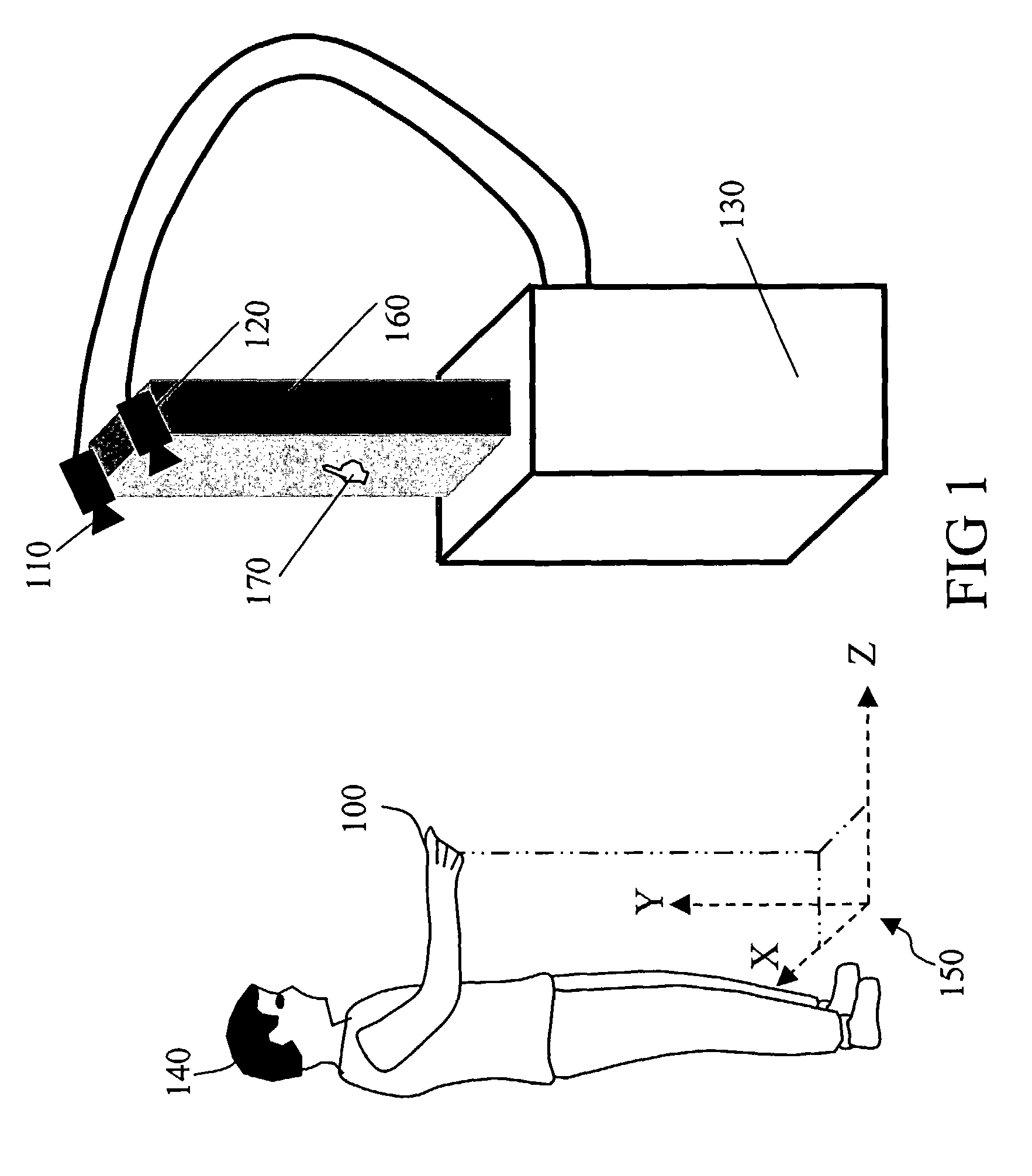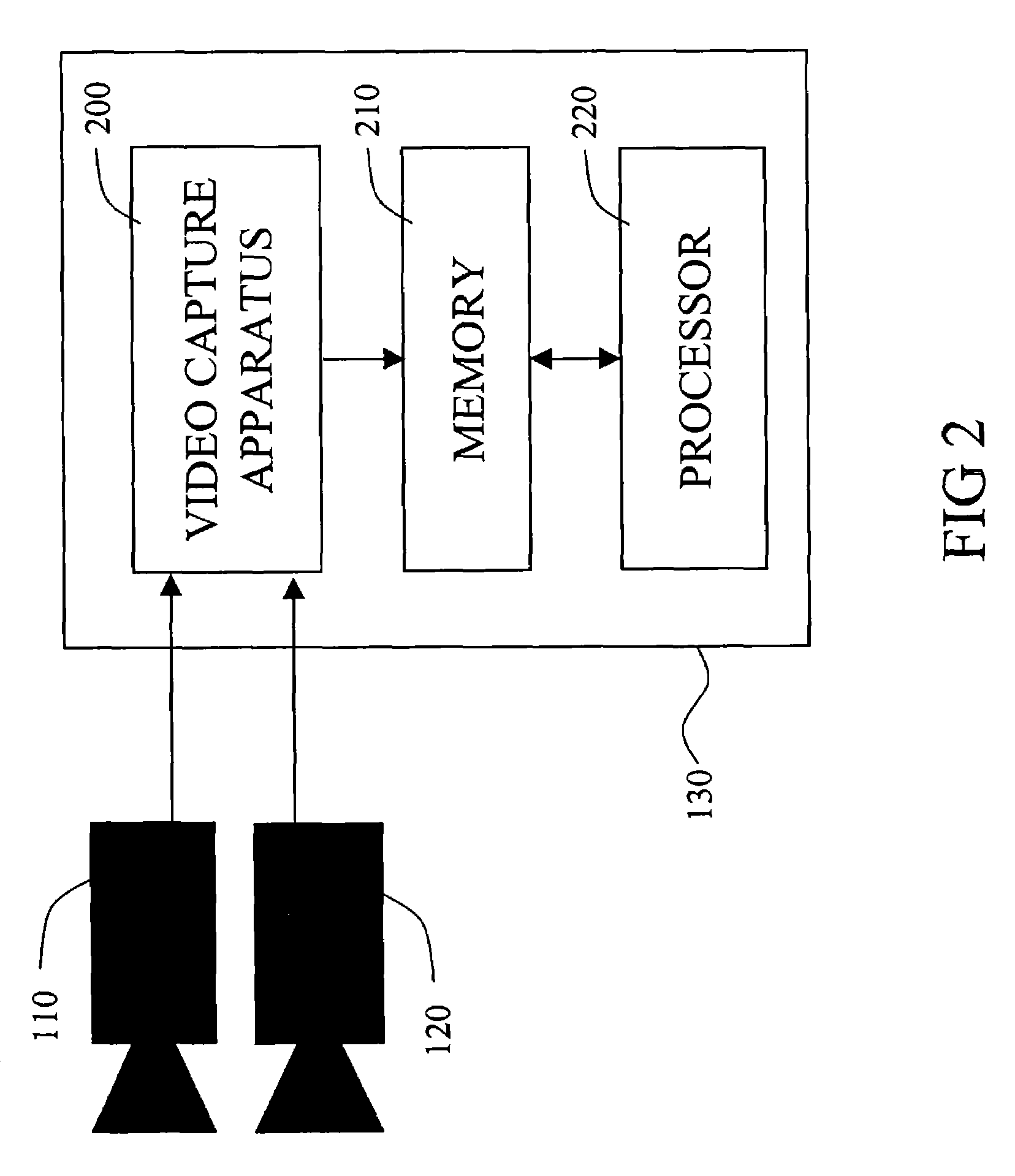Method and apparatus for robustly tracking objects
a technology of object robustness and tracking method, applied in the field of computer graphics user interfaces, can solve the problems of lack of many functional, performance and robustness capabilities of video tracking system, easy failure of feature matching approach, and lack of performance and robustness capabilities
- Summary
- Abstract
- Description
- Claims
- Application Information
AI Technical Summary
Benefits of technology
Problems solved by technology
Method used
Image
Examples
Embodiment Construction
[0032]A method and apparatus for tracking an object in three dimensions is disclosed. Although the presented embodiment describes tracking a person's hand, one with ordinary skills in the art understands that the presented invention not only pertains to tracking a person's hand but also general objects if the color of the object to be tracked is known. Furthermore, it will be apparent for one skilled in the art that certain details are not required in order to practice the present invention.
Object Tracking System Overview
[0033]A preferred embodiment of the disclosed invention is shown is illustrated in FIG. 1. Two color cameras 110 and 120 are connected to a computer system 130. The cameras are pointed at and capture a plurality of images of a hand 100 of a person 140 that is in the viewing area of the cameras. In the illustrated embodiment, the cameras are located on top of a stand looking down at the object 100 to be tracked. However, other viewing configurations such as the camer...
PUM
 Login to View More
Login to View More Abstract
Description
Claims
Application Information
 Login to View More
Login to View More - R&D
- Intellectual Property
- Life Sciences
- Materials
- Tech Scout
- Unparalleled Data Quality
- Higher Quality Content
- 60% Fewer Hallucinations
Browse by: Latest US Patents, China's latest patents, Technical Efficacy Thesaurus, Application Domain, Technology Topic, Popular Technical Reports.
© 2025 PatSnap. All rights reserved.Legal|Privacy policy|Modern Slavery Act Transparency Statement|Sitemap|About US| Contact US: help@patsnap.com



